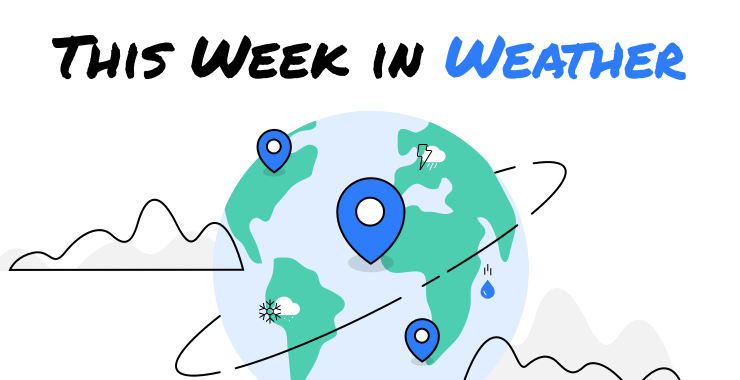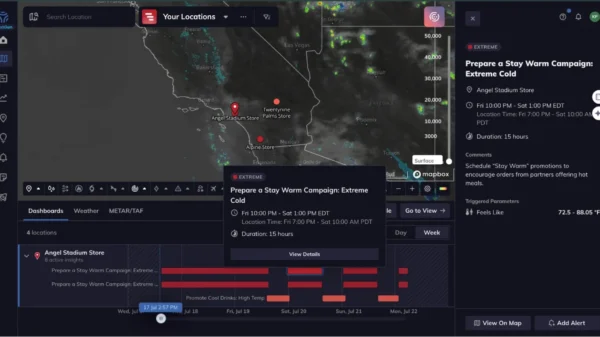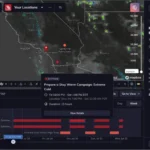For This Week in Weather, we’ll be sharing the big weather stories and the impact in the US for the coming week of April 27, 2020. We hope it will help you understand the weather heading your way and how it will impact your business specifically.
So let’s get into it!
Monday (4/27)
A storm system strengthens as it moves northeast over New England, bringing rain and 40-50 mph wind gusts to much of New England on Monday. As colder air moves in from the north, spring snow is also expected in the mountains across central to northern New England, where limited snow accumulation is possible.
Business impact: With high wind gusts, New England utility companies should be prepared to combat possible outages from downed trees and telephone poles.
Tuesday (4/28)
A jet stream disturbance originating from the Pacific moves across the Midwest on Tuesday, bringing rain from the Dakotas, Minnesota and Wisconsin, south across the Central U.S. to Kansas, Missouri and Illinois. Warm temperatures return to the southern and central states.
Severe thunderstorms are possible further south across Oklahoma, Texas, Arkansas and Louisiana Tuesday afternoon, evening and overnight. Thunderstorms, some severe, may extend further north across Kansas/Missouri into southern Iowa and parts of Illinois, depending on the northward extent of Gulf moisture.
Business impact: Delivery companies in the Midwest should prepare for a surge in demand during severe storms.
Wednesday (4/29)
The severe thunderstorm threat shifts south ahead of an advancing cool front, and brings showers and some severe thunderstorms to Southeast and South Texas, and further east across the central Gulf coast. Meanwhile, cold rain pushes east across the upper Midwest and Great Lakes. Rain and a few thunderstorms reach the Southeast and Mid Atlantic states late Wednesday into Thursday morning.
Business impact: Logistics businesses in Texas and the Gulf coast should re-route to avoid potential flooding.
Thursday/Friday (4/30 and 5/1)
Heat builds across the Southwestern states, including interior California, the desert Southwest, and further east to west Texas. Highs in the low to mid 90s can be expected across the Sacramento Valley and parts of interior central and southern California, with highs in the mid 80s closer to the southern California coast. Highs well into the 90s build across the desert Southwest eastward to west Texas, with some areas of the desert Southwest reaching the lower 100s.
Business impact: Energy companies should prepare for a spike in energy use from air conditioning across California and the Southwest.







